
Vol. XIII, No. 8, October 2013
- Editor's corner
- Implications of the new 6th Sense & the flight from conversation
- Meet us in Orlando
- Current project status
- It's time to change the industry's lexicon
- Foundations Entertainment University heading to Phoenix
- Changes to location-based entertainment participation and spending
- Healthy eating on the increase & free newsletter
Implications of the new 6th Sense & the flight from conversation
Our enjoyment of entertainment and social experiences is closely linked to our evolution as Homo Sapiens, modern humans.

Since around 200,000 years ago, when what is referred to as the anatomically modern human, first emerged on earth until very recently, there have been little if any changes in how humans experience entertainment. Entertainment experience was limited to the five senses – sight, sound, taste, smell and touch.
A short history of entertainment
The earliest entertainment experiences most likely were listening to stories while sitting around a campfire and sharing food, a very social experience that bonded family and tribal members. Then, around 100,000 or more years ago, different families, tribes and groups of humans learned to gather at some temporary location away from their home for larger group celebrations and entertainment; thus the beginnings of location-based entertainment (LBE). As civilization advanced, permanent entertainment venues such as arenas and coliseums were constructed. Still, entertainment experiences were limited to the physical location where they took place and using the five senses.
New technologies
Then, around 150 years ago, new technologies changed things with the invention of analog photographic and phonographic recording technologies. Now entertainment that took place at some other location and at some other time could be experienced in the home. At the same time the invention of the telephone meant that people no longer had to be in the same physical location to socialize. About two decades later (mid-1890’s) the kinescope parlor and then the first movie theatres brought analog forms of film entertainment to LBEs.
This was followed by the invention of the home radio in 1920 and the home television in 1941. Now both live and recorded entertainment could be transmitted into the home, the beginning of the creative destruction of location-based entertainment. That was followed by the invention of the portable radio, which allowed personal entertainment to go mobile for the first time. Now we had the beginning of the creative destruction of both location-based and at-home entertainment. The Internet followed in 1995 as well as advances to digital forms of entertainment both at home, on mobile devices such as the iPod and at entertainment venues. Simultaneously, accessible virtual worlds emerged via digital media.
During this entire history of entertainment, the fundamentals of human entertainment and social experiences did not change; there was no human evolution that changed how humans interacted with the experiences or socialized – they were still limited to the five senses of sight, sound, taste, smell and touch.
Birth of the 6th Sense

2007 is the pivotal year when humans began to evolve a 6th Sense of how they perceive and interact with the world, including how we experience entertainment and socialization. That was the year that the iPhone, the first smartphone, was introduced. It’s hard to believe that was only six years ago. Just think how this device has changed our daily lives in such a short time.
Over the six years since, the technology and applications of the smartphone and other digital screens has rapidly evolved with all forms of apps, social media and forms of entertainment that gives us constant access to online content, communication and services. The combination of the smartphone and other mobile devices, the Internet and social networking, what has been described as a triple revolution, is causing monumental transformations in how we connect and interact with the world and people.(1) It has annihilated both the distance and time of experience. 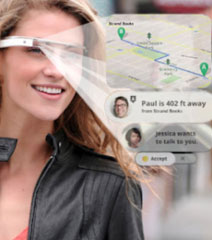 As a result, many humans have evolved to have a new 6th Sense, constant (digital) connectivity. The smartphone has become an always-on/always-on-you appendage for many people and is now the new 6th Sense that they use to constantly connect with people and experience both the real and virtual worlds. (2) In a sense, they have internalized the technology of mobile connectivity. Going online isn't something they do. It's now something they are; now they see themselves as one with their devices. Now it's how they live their lives. It’s changing how they experience and interact with the world. This constant connectivity is about to become even more seamless with the advent of the Google Glass and other wearable devices and technological advances we can’t yet imagine. (3)
As a result, many humans have evolved to have a new 6th Sense, constant (digital) connectivity. The smartphone has become an always-on/always-on-you appendage for many people and is now the new 6th Sense that they use to constantly connect with people and experience both the real and virtual worlds. (2) In a sense, they have internalized the technology of mobile connectivity. Going online isn't something they do. It's now something they are; now they see themselves as one with their devices. Now it's how they live their lives. It’s changing how they experience and interact with the world. This constant connectivity is about to become even more seamless with the advent of the Google Glass and other wearable devices and technological advances we can’t yet imagine. (3)
The technology that has brought about the new 6th Sense is now even changing our perception of the real world with interactive applications such as augmented reality and augmented virtuality. It is fundamentally changing the very nature of the world we experience. And we are only in the infancy of the rapidly evolving transformations that constant connectivity is bringing to our lives.

And if you think we are exaggerating what we are saying about constant connectivity, just consider this statistic. 64% of all cell phone using adults (now 91% of all adults) fall asleep each night with their cell phones within reach. For 18- to 29-year-old digital natives, it's 90%. Yes, constant means 24/7. There is even a new phenomenon of sleep-texting.
This shift to constant connectivity is very disruptive to location-based entertainment. Now humans can stay highly socially connected with all their friends and enjoy multiple forms of entertainment wherever they are using their newly evolved 6th Sense, 24/7, all at little or no cost. We are witnessing a new form of sociality in which isolation of our physical bodies no longer means a lack of connectiveness with other people. We have a created a completely new experience of Place, as place is no longer only a physical space, but also our connections to other places, experiences and people through our device’s portal. In fact, we are often so married to our digital devices that we aren’t really present to the people and things happening in the real world. Likewise, entertainment has become irrelevant to location and time and has taken on new, highly accessible forms in the digital world.
The expectation of 6th Sense interactivity
The new 6th Sense ofconstant connectivity means that many people, especially teens and younger adults, now expect to use their 6th Sense to interact with their real world experiences. It is not longer a passive world for them. They want to be able to create, shape and curate their experiences. They want to participate in their entertainment venue experiences before, during and after their visit using their digital devices. They want an extended relationship with the venue that is much more then just the visit, all made possible by constant connectivity.
The need for digital interactivity is confirmed by the April 2013 Edelman Global Entertainment Study that surveyed 18 to 45-year-olds. The study looked at viewing entertainment on television, laptops and mobile devices. In the U.S., 62% of respondents said they try new ways to enhance their entertainment experience by using another device. Almost one-half (47%) said they interact in real time with what they are watching. (The percentages are substantially higher in the emerging markets of the world). Edelman also observed that sharing via social networks is now fundamental to the entertainment experience. This new expectation of being able to interact with video entertainment is affirming the expectation of being able to interact with location-based entertainment as well.
Some recent Twitter activity research affirms this digital interactivity with entertainment. Accordingly to analytics firm SocialGuide, the finale of the TV show Breaking Bad generated a total of 1.24 million tweets, 22,373 tweets per minute during the show. During this year’s Super Bowl, sports fans generated 24 million tweets about the competition. Nielsen recently began using Twitter’s data to measure online social activity around TV viewing. Nielsen found that 19 million people wrote 263 million tweets about live TV events during the second quarter of this year, up 38% from a year earlier. Nielsen also found that many people read tweets about TV shows while they watch even if they don’t post anything themselves, so they concluded that the Twitter TV audience is 50 times larger than the number of people tweeting about a show.
Constant connectivity is affecting our behavior in many ways. It is believed to be contributing to a reduction in driving, especially among the younger generation who don’t have to spend $3.00+ per gallon to drive to meet up with their friends as they can at no cost connect with them on social media 24/7. 16 to 34-year-olds drove 23% fewer miles in 2009 on average than their same age group did in 2001 according to research by the U.S. PIRG Education Fund.
Joe Pine and James Gilmore in their book The Experience Economy advise that the design of an experience needs to engage all five of the senses. That advice now needs to be updated to engagement of all six of the senses. This presents a serious challenge for location-based entertainment; how to also engage the new 6th Sense, constant connectivity, not just the original five. Without personal digital device engagement with the experience, it is no longer a rich and desirable entertainment experience for much of the population, and that share of the population is growing rapidly.
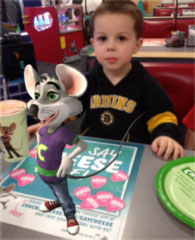
Some larger venues such as museums and theme parks have developed interactive smartphone apps that allow guests to interact with the venue while they are there. The only family entertainment center type venue we know of that has done so is Chuck E. Cheese’s that developed an app called “Say Cheese!” that allows children to see an augmented Chuck E. performance and allows their parents take a photo with both Chuck E. and them in it when the smartphone is pointed at hotspots within the store.
Downsides to constant connectivity
There are downsides to constant connectivity for location-based leisure (LBL). One is that LBEs are becoming less relevant to maintaining social connections. Second is that now you don’t need to go to a physical entertainment venue to be entertained as entertainment is now in your hand wherever you find yourself, or even more convenient with wearable devices.
But there is perhaps an even scarier aspect of constant connectivity based on research by Sherry Turkle, Director of the Initiative on Technology and Self at the Massachusetts Institute of Technology, as discussed in her book Alone Together: Why We Expect More From Technology and Less From Each Other and her other writings and interviews. (4)
Turkle’s 15 years of research about people and their relationships with mobile technologies has identified the effects digital technology is having on how friends and people interact in the world. She sees a trend called a flight from conversation brought about by texting and social media. Turkle says we, and especially children and younger adults, are developing conversation-phobia. What is happening is that people are preferring texting and posting on social media rather than talking on the phone or having face-to-face conversations. She asked teens and adults why they preferred text messaging over face-to-face conversation; they responded that when they are face-to-face, “you can’t control what you are going to say, and you don’t know how long it’s going to take or where it will go.”
Turkle believes that we are turning to this safe form of communication “because technology appeals to us most where we are most vulnerable. And we are vulnerable. We’re lonely, but we’re afraid of intimacy. And so from social networks to social robots, we’re designing technologies that will give us the illusion of companionship without the demands of friendship. We turn to technology to help us feel connected in ways we can comfortably control.”
Some recent surveys are evidence of Turkle’s findings. Digital marketing firm Performics polled 2,000 American adults in July 2012 who access social networking sites at least once a day. Half said they preferred to text rather than use a phone. Nearly half said they had replaced some time on the phone with online social networking. Nearly one-third said they preferred to connect with their close friends through a social network rather than through conventional methods (phone and in person).
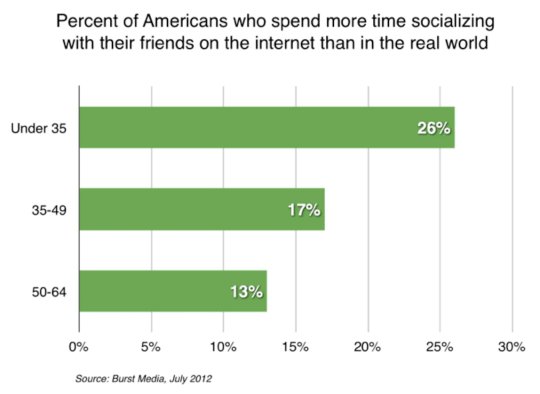
A survey by KRC Research of 2,000 North American women in early 2013 found that one-quarter of women who use social media prefer to socialize online rather than in-person. Even more telling was that the virtually-engaged women said they enjoy their online networks nearly as much as they enjoy live social activities (75% vs. 77%) and slightly more than dating or spending time with their partner (72%).
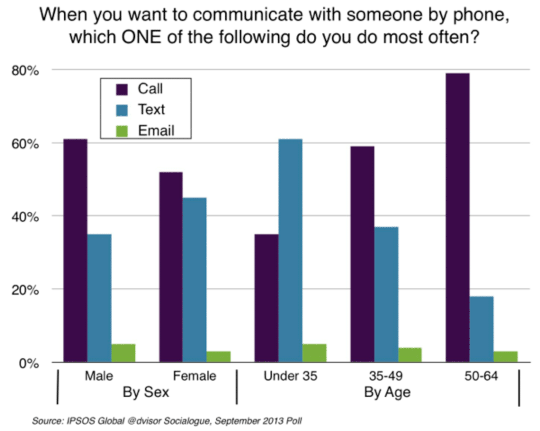
A Common Sense Media survey in June 2012 found that only 49% of teens say that their preferred communication method with friends is in person. Their second most popular method was texting (33%) followed by on a social network (7%). Only 4% preferred phone communication.
According to a March 2012 report from the Pew Internet & American Life Project, just 14% of teens age 12-19 say they talk to friends on a landline on a daily basis, down from 30% in 2009. There was also a drop in talking to friends daily on a cell phone, 26% down from 38% in 2009. Pew’s most recent survey this spring found that 97% of age 18-29 cell phone owners text.
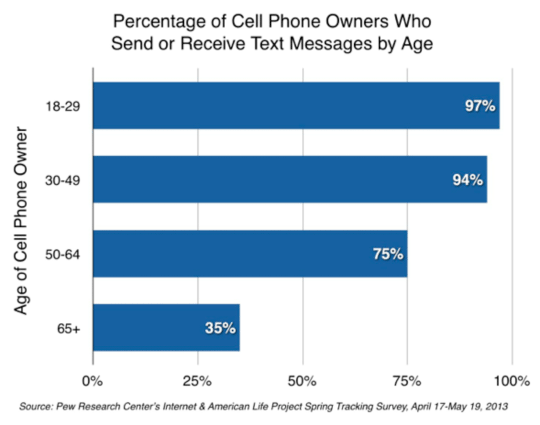

Here’s what’s so scary about this flight from conversation and communication shift to texting and social media. People are preferring texted and typed digital world communication and socialization rather than using face-to-face or even phone conversation in the real world. This means that they are developing a phobia of meeting friends and family in the real world where they have to talk to them. And even when they do get together, they are often tuned into their digital devices rather than to each other, what Turkle refers to as being alone together. This greatly diminishes the appeal of going to a location-based entertainment venue where they can have conversations and socialize together while having fun. You no longer need to travel across town to meet up with a friend at an entertainment venue when you can more easily connect on social media and be entertained on your mobile device. Living in the digital and virtual world is becoming more appealing than experiencing the real world and people face-to-face. The digital world is the playground for many people, especially Millennials.
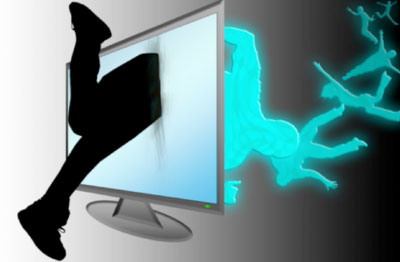
People are migrating their social and other experiences from the real world to the digital world.
The future for bricks-‘n’-mortar entertainment
Today, the smart and successful bricks-‘n’-mortar entertainment venues have evolved to offer a High Fidelity experience that engages all five of the original senses with interactive and engaging forms of entertainment and appealing food and beverage, often in a inviting social setting. But now we have an evolving 6th Sense, one that especially the younger constantly connected generation often gives precedence to over real world experiences. To many, the lack of digital connectivity to the physical venue experience, just using the old world five-sense experience, has lost its appeal. To them, an interactive entertainment experience needs to include their smartphone and engage their 6th Sense.
The challenge for bricks-‘n’-mortar entertainment venues is to create a destination experience that overcomes the flight from conversation, a destination that creates an experience that is so compelling that it overcomes the draw and safety of just staying connected with family and friends via social media. One positive aspect of interactive entertainment is that is creates a safer social experience with more casual conversation, one that doesn’t require the intimate conversation that many people fear and avoid.
To prosper in the future, location-based entertainment must now evolve with human evolution and find ways to integrate the new 6th human sense, constant connectivity, into the social and entertainment experiences they offer. LBEs also need to create a safe and conversation-safe experience compelling enough to draw people away from the cocoon of safe texting and social media conversation. Technology is rapidly evolving and its use is redefining human connectivity and experience. Location-based entertainment needs to evolve with that human evolution to stay relevant.
Footnotes:
- We are really still in the infancy of the triple-revolution
- In his 1962 book The Gutenberg Galaxy: The Making of Typographic Man Marshall McLuhan, Canadian communications theorist, was the 1st to postulate that technology fundamentally changes the ways in which human beings experience and interact with their environment. Even if you don’t agree that constant connectivity is a true human 6th Sense, you must agree that the advent and worldwide domination of the Internet and its attendant technologies and now mobile devices are a revolutionary alteration of our collective sense of the real world – a true extension of our senses.
- Humans were not designed under conditions of constant digital connectivity; the vast majority of our evolution occurred in the pre-industrial era. So although we have recently embraced constant connectivity as a way of life, there are all types of issues of whether our bodies and brains can really handle it. But that’s a matter for a completely different discussion.
- If you have children, watch the TED Talk by Sherry Turkle. It will make you think about possible new and undesirable habits your children may be developing.
A shorter version of this article will appear in the November issue of RePlay magazine
Vol. XIII, No. 8, October 2013
- Editor's corner
- Implications of the new 6th Sense & the flight from conversation
- Meet us in Orlando
- Current project status
- It's time to change the industry's lexicon
- Foundations Entertainment University heading to Phoenix
- Changes to location-based entertainment participation and spending
- Healthy eating on the increase & free newsletter


